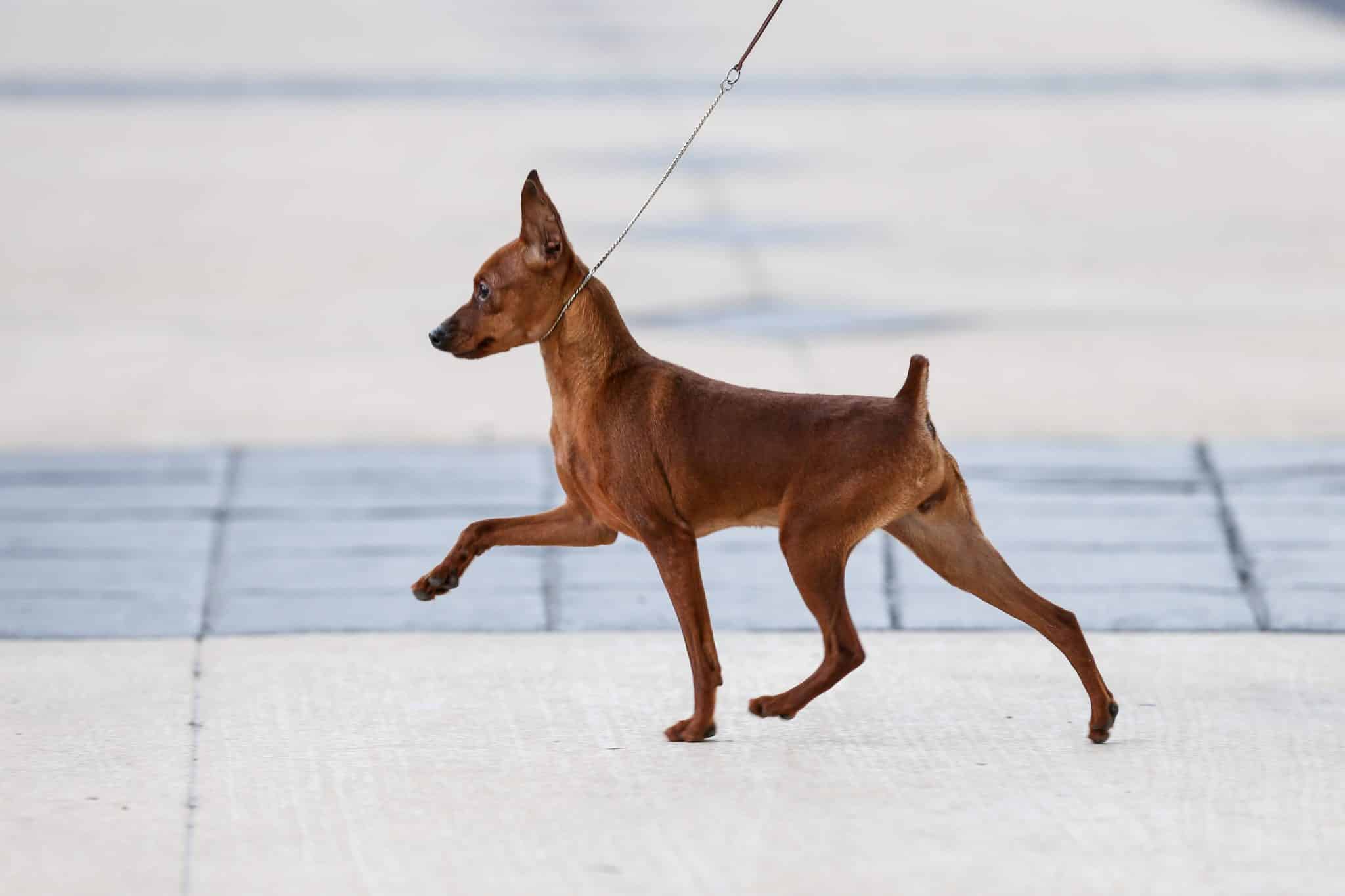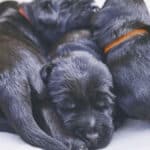Movement is an essential element of Breed Type, not a separate quality! The position I’m presenting may not be embraced by all, and there may be some detractors. This point of view challenges some long-held beliefs that challenges you, the reader. Before you decide which side of the fence you’re sitting on, reflect on your own breed and consider applying this theory to evaluate your own dogs, standing and moving.
You can’t present your dog to its best if you don’t understand how it’s supposed to move.
For decades, judges have been taught that they should make their first cut on type and then choose the best one moving. Type and movement have been categorized separately. What if (one of my favorite phrases), what if movement was an essential element of breed type? The first whiff I had of this theory was on a car ride with the infamous Rick Beauchamp from the American Dog Show Judges’ Institute to the airport—a several hour ride.
Rick was always able to speak eloquently about his passion, Type. His book, Solving the Mysteries of Breed Type, is a must-read. He didn’t say exactly what I’m about to share here, but he got the wheels turning in my mind over the past few years since I’ve been sharing long-held concepts with the members of the Dog Show Mentor program.
If movement is included in breed-specific characteristics, then we need to look at the differences in movement that add to the hallmarks.
THINK ‘HALLMARKS’
To explain this theory, let’s look at hallmarks. I’ve had several highly regarded breeders and judges say that they don’t think in terms of hallmarks when evaluating dogs. I say, how can you NOT, first and foremost, think of hallmarks? Some breed standards, like the Rhodesian Ridgeback and the Giant Schnauzer, specifically use the word “hallmark” in their standards. Many standards, however, do not use that word. So how do we know what a breed’s hallmarks are?
We know that there are 3-5 characteristics that, when combined, create a totally unique breed of dog. Some of those characteristics are the same as in other breeds, but are combined with different elements to create a totally separate breed. For example, there are many breeds that only come in the color combination “black and tan/mahogany,” but only one has the hallmark of a thumbprint on the front pastern. A Manchester is not a Rottweiler. The Rottweiler has different hallmarks, one of which is arguably that he “is a trotter.” Though these two breeds only come in one color combination, they are separate breeds. Both of them have additional breed-specific characteristics that create that breed.
These 3-5 elements are what Rick called the “Essential Components of Breed Type.” I am going further here and presenting additional cases as to why movement should be acknowledged as part of breed type. If movement is included in breed-specific characteristics, then we need to look at the differences in movement that add to the hallmarks. We can have breeds that are of the same basic shape yet have different outlines. Those outlines create different types of movement. Square breeds, for example, don’t necessarily have the same movement. Here are several square breeds and the movement that uniquely characterizes them.
FAIR AND SQUARE
The Poodle moves with “light springy action… effortless movement is essential.” This describes the essence of the Poodle in action, or what is commonly referred to as the “Poodley” gait. This is undoubtedly an essential component of breed type in the Poodle and is a hallmark of the breed. There are other hallmarks that are static, but movement in the Poodle is a high priority among Poodle fanciers.
The Official Standard of the Boxer begins to describe the gait in the first paragraph: “The gait is firm yet elastic (emphasis mine), the stride free and ground-covering.” When we look at the Gait section of the Standard, it describes each action in detail. One phrase that I believe no other standard contains is “powerful drive emanating from a freely operating rear.” I have personally never seen a Boxer with the proper elasticity without this quality. Other characteristics that are considered hallmarks in this breed are a muzzle where the root is lower than the tip, and a wide, straight set of incisors that are in line with the canines. Although the head is of great importance in the Boxer, the Standard states that “first consideration is given to general appearance and overall balance. Special attention is then devoted to the head…” This is a Standard that is very specific and descriptive, and temperament is no exception. Poor temperament “… should be severely penalized.” The Boxer is a family dog, and temperament is an essential component of breed type.
Finally, the movement of the Doberman Pinscher is described differently, although it is a square Working breed like the Boxer. Again, in the first paragraph under General Appearance, the breed is described as being “compactly built for great endurance and speed.” Both the Boxer and the Doberman should have reach and drive. However, the Doberman Standard describes its gait with “strong rear action.” This doesn’t provide the same elasticity as in the Boxer, with the “freely operating rear.” Thus, each has its own distinctive movement.
We, as dog people, instantly recognize a breed based on one word or phrase to describe its gait. It is a hallmark that makes the standing dog come alive in motion. Each breed has distinctive movement, described in its Standard, that must be considered part of type.
We could continue to work with any number of standards, such as the “loose-jointed, shuffling, sidewise motion, giving the characteristic ‘roll” of the Bulldog, the “four tracking” French Bulldog, the Rottweiler that is “a trotter,” the “unhurried, dignified” gait of the Pekingese, the Miniature Pinscher’s “hackney-like” gait, the “lift” of the Italian Greyhound, the “rollicking” Irish Setter, the “rotary action” of the Norwegian Lundehund, and the “jaunty” Pug. There are so many breeds that describe the gait in the standard uniquely. We, as dog people, instantly recognize a breed based on one word or phrase to describe its gait. It is a hallmark that makes the standing dog come alive in motion. Each breed has distinctive movement, described in its Standard, that must be considered part of type.
The standing dog can be stellar, but it is static and motionless. It is only after the dog holds and enhances his own essence in motion that we understand how the history, the function, and the temperament of a breed come alive.
MOVMENT AS HALLMARK
Let’s look at the Cairn Terrier Standard to see why hallmarks matter. This is a working Terrier breed that is described in the General Appearance section as “…an active, game, hardy, small working terrier of the short-legged class; very free in its movements…” with a “…hard, weather-resisting coat; head shorter and wider than any other terrier…” which is a bold statement when compared to the West Highland White Terrier!
The statement “very free in its movements” is upheld under the Condition section of the Standard where it states that the Cairn “should move freely and easily on a loose lead…” which tells the reader that the reach and drive is evaluated on a loose lead. There is NO Gait
section to the Standard, which was approved in 1938. An additional hallmark in the breed is the hard and weather-resistant coat. The “Toto dog” oozes with type based on
these elements.
If you’re a breeder, you must understand what the hallmarks are in order to breed for them, and if you’re a breeder/exhibitor or a breeder/owner handler, you can’t present your dog to its best if you don’t understand how it’s supposed to move. When you present the breed according to its standard, it allows that standard to come alive in your dog. The standing dog can be stellar, but it is static and motionless. It is only after the dog holds and enhances his own essence in motion that we understand how the history, the function, and the temperament of a breed come alive.
Photo from AKC.









